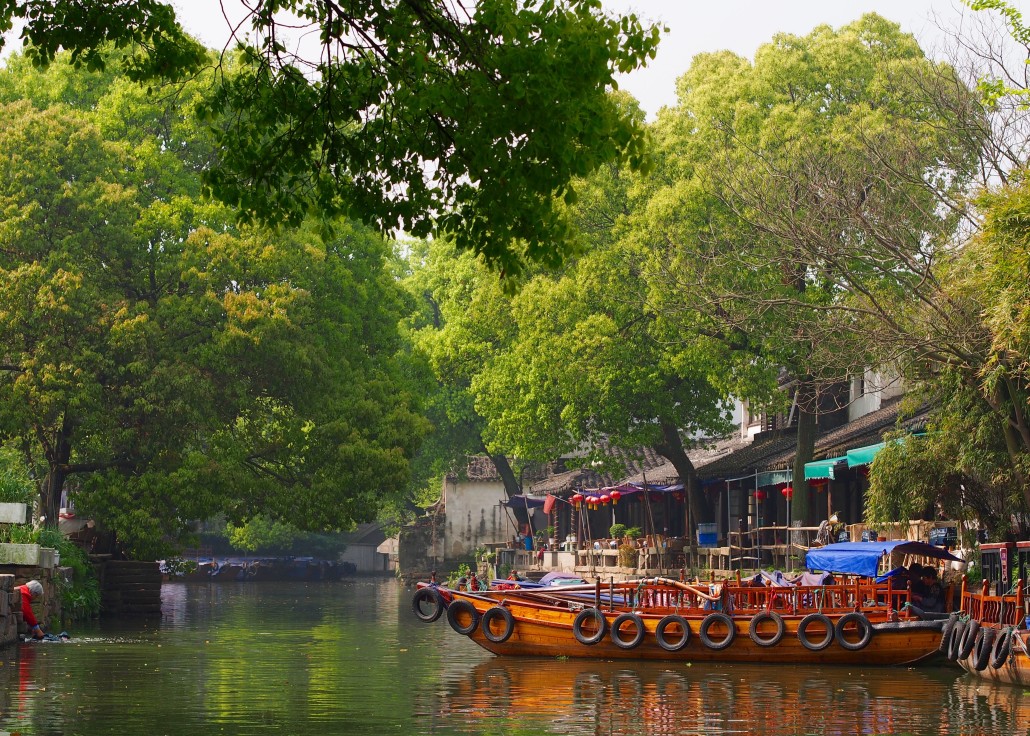
Like perhaps nowhere else on Earth, modern China is dense with the sort of experiences that lead to great travel revelations. Western sensibilities are regularly chewed up and spit out in the “Middle Country” (Simplified Chinese:中国), and for true world-beating travelers, that is something to be cherished. No matter how many of its roads you’ve walked, the China you know will eventually disappear into a mist-cloaked back alley of unknown; wander after it and a new China will emerge, weirder, wilder and more illuminating than before.
In April, I touched down in China for the second time. The China I remembered—the China of Xinjiang, the northwestern province of pristine mountains and colorful landforms cut from geometry class—was nowhere close, and so I walked out of Shanghai Pudong International Airport with no bearings to speak of. Two-hours-by-trafficked-highway later (it’s just 60 miles), I arrived in a world of lantern-lit canals, chicken feet smorgasbords and slow-burning, sweet-smelling wormwood—in Suzhou. It looked a little like this:
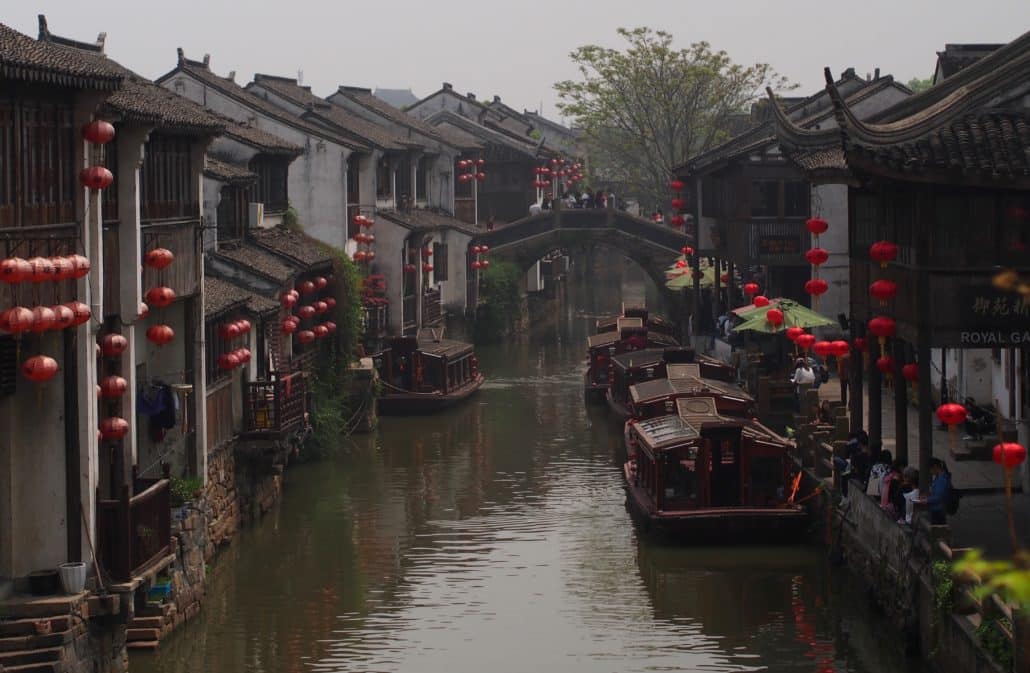
In Suzhou, the touchstones of Xinjiang were far, but the oddities and ambitions I’d adored of modern China were all around. On Pingjiang Road and Shantang Street, those wizened and ghostly streets of 800 and 1,200 years respectively, there were woks sizzling with animal dregs, rolling carriages of crouched children and chickens, and signs hung with incongruous English translations, like “Cat Grandpa.” There were UNESCO riches (there are 48 UNESCO World Heritage Sites in China, and parts of two in Suzhou), which sometimes welcomed more people than it is comfortable to be around. The fast-paced China of tomorrow even encroached; the world’s longest LED screen (500 meters) soars over a stretch of downtown Suzhou.
But by Chinese standards, the soul of this city was different. Five days in Suzhou revealed a haven for the restful in a country in inexhaustible pursuit of all things bigger, faster and more. On numerous occasions, people I met in Suzhou recalled being lulled by its soothing energy into relocation from the likes of Shanghai. Unexpectedly, and wonderfully for western guests on whirlwind Chinese adventures, it is a place to slow down.
Here’s how to do it:
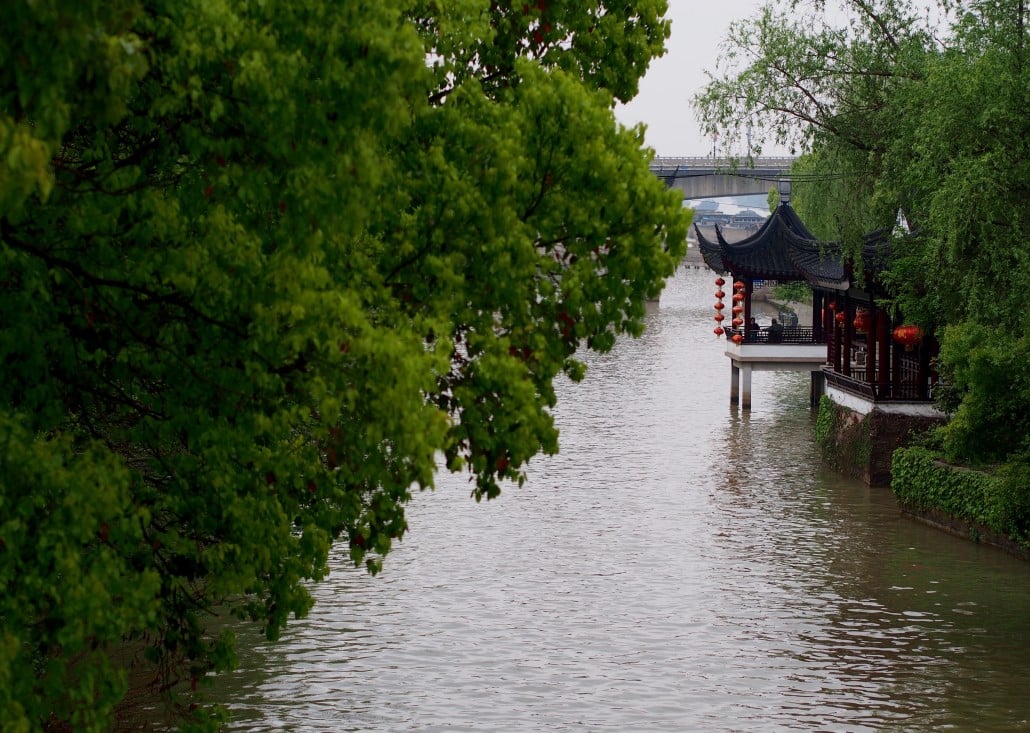
Suzhou basics
It’s proximate to Shanghai, but there’s more. Like the stories of most cities in China, Suzhou’s is long and colorful. Skipping forward to 2016 for a moment, here are the vitals:
- Pronounced: Soo-joe
- Known as: “The Venice of the East” (see “The canals and water towns” below)
- Location: ~100 km/60 mi (25 minutes by maglev train) northwest of Shanghai (on Google Maps)
- Population: ~6 million urban, ~10 million metropolitan area
- Currency: Yuan (or “RNB”), like in all of China (up-to-date exchange rate is here)
- Famous for: Canals, gardens, silk, green tea, Pingtan and kunqu opera
- People: Regarded in China as tolerant and educated; they “enjoy the slow life,” according to my guide
- In an old Chinese adage: “Above there is paradise and down below there is Suzhou and Hangzhou” (relating Suzhou to paradise)
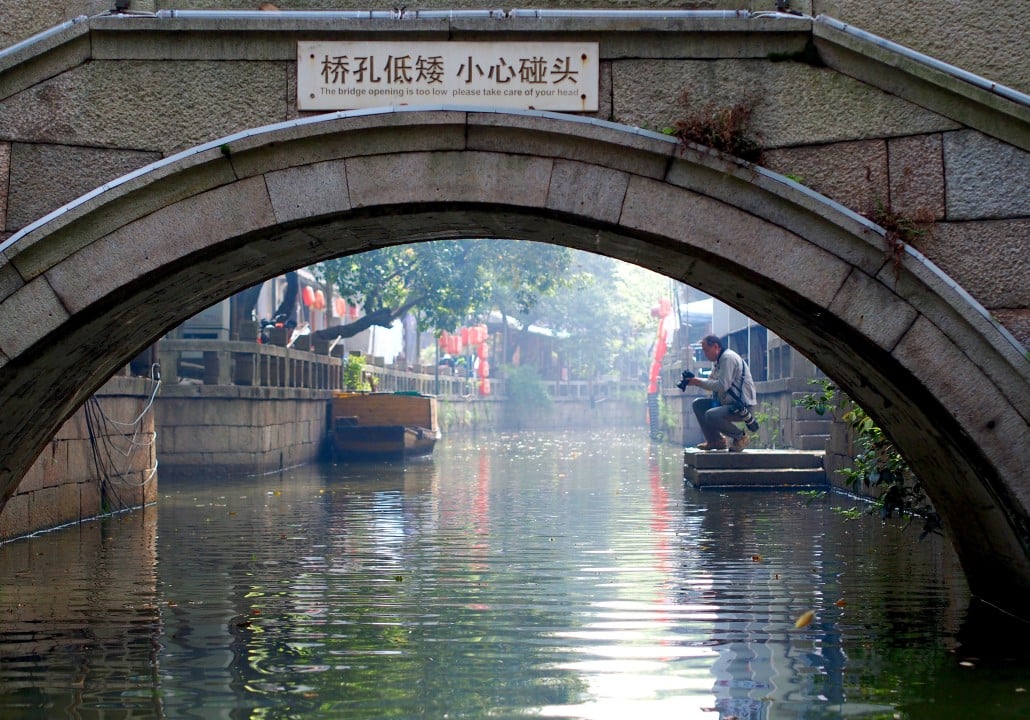
The canals and water towns
The “Venice of…” designation has been wrapped rather loosely around far too many destinations. I’ve heard Bruges as the “Venice of Northern Europe,” and Fort Lauderdale as the “Venice of America,” and those are two of the more reasonable examples. Suzhou, you will find with any research, is deserving. The city was christened the “Venice of [the East]” by none other than Marco Polo, a man familiar with the one and true Venice at its peak.
The parallels Polo saw are still appropriate in 2016. The now-famed latticework of canals and stone bridges in Suzhou is enchanting in a way more commonly associated with Europe than with China. Functioning waterways, just a few boats wide, provide the blueprint for the city. Beside them are cobbled pedestrian streets worn tired by centuries of foot traffic.
The city’s special relationship with water has also, again in the Venice mode, brought it moderate fame and fortune. Suzhou has witnessed history since at least 514 BC (!), when lakes and waterways pumped life into a new capital known as Helü City. Over the hundreds of years that followed, the construction of the Grand Canal of China (a UNESCO World Heritage Site running a Great Wall-like 1,200 miles) linked the city that became Suzhou by water with other great swellings of civilization, and with great pools of tradable goods, it came to flourish; for a spell, Suzhou was the largest non-capital city in the world and the center of the global silk trade.
On the Grand Canal: It’s a UNESCO World Heritage Site, and it runs a Great Wall-like 1,200 miles.
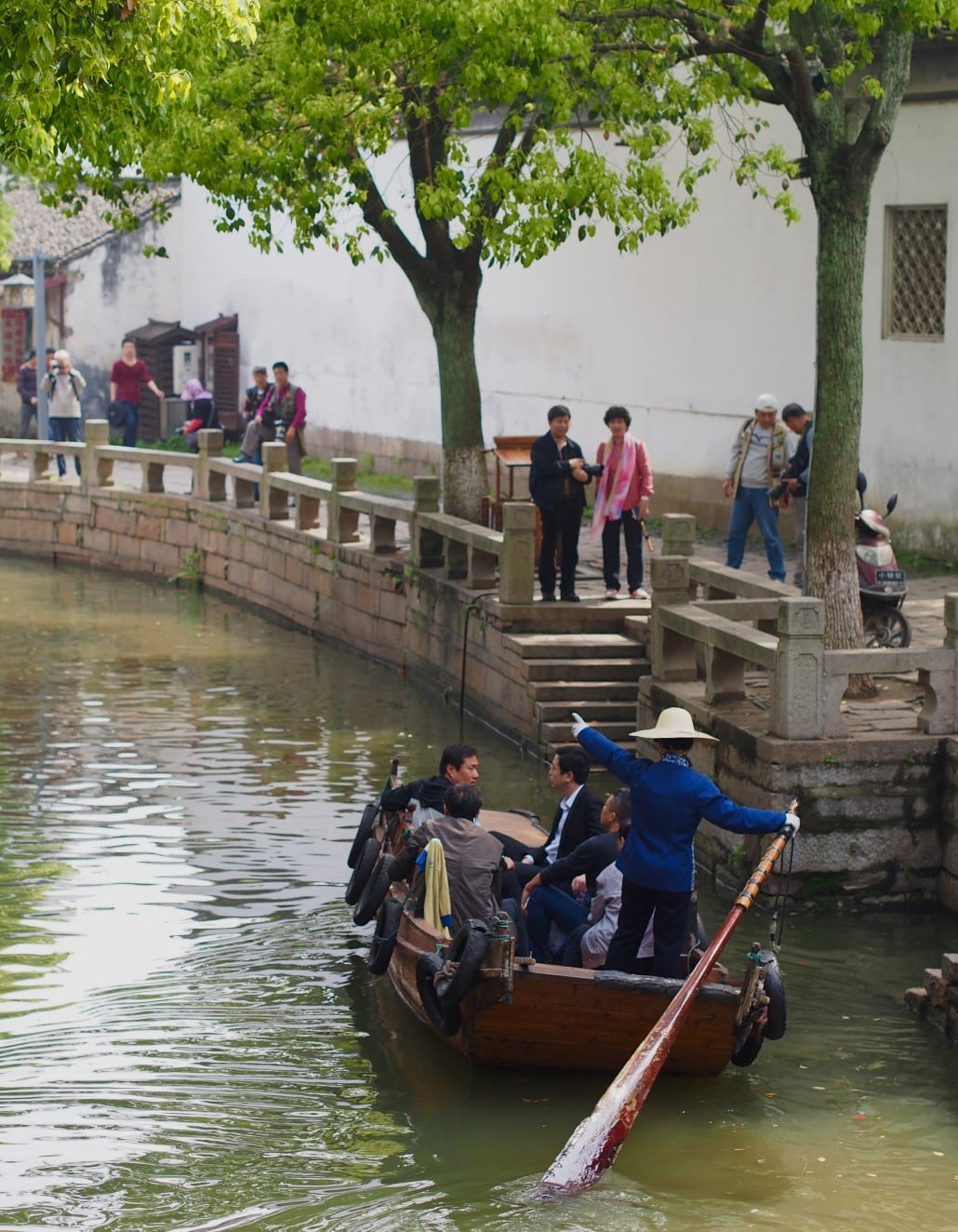
Today, Suzhou’s waterscapes reflect literally thousands of years of life and lamentation. Settlement beside these waterways is in its third millennium, a testament to the eternal respect we reserve for water in large quantities and that locals reserve for Suzhou. A boat tour in Tongli, on the outskirts of the city, was calming. So was the trip by ferry to Tiger Hill, home to a sprawling bonsai garden and the Pisa-esque (leaning 4º) Yunyan Pagoda. I took in a sunset (and a Snow beer, the world’s top-selling brew) at the bow of an aging stone bridge by Pingjiang Street and watched my concept of time fade into the grey-orange sky. Such moments of restoration are not always associated with modern China. Then again, most of China doesn’t look like this:
Cruise one of the 20-plus canals splitting the Weichang River. Walk the shops and stalls of chicken feet beside them. Slow things down, at sunset, for example, at the water’s edge. And don’t miss the “water towns”:
- Tongli — Home to 47 bridges, including three commonly walked in succession for luck
- Luzhi — Famed for its Shen Temple
- Mudu — A serene and simple place for a gondola ride
- Zhouzhuang — Where you’ll find five lakes and famed Two Bridges
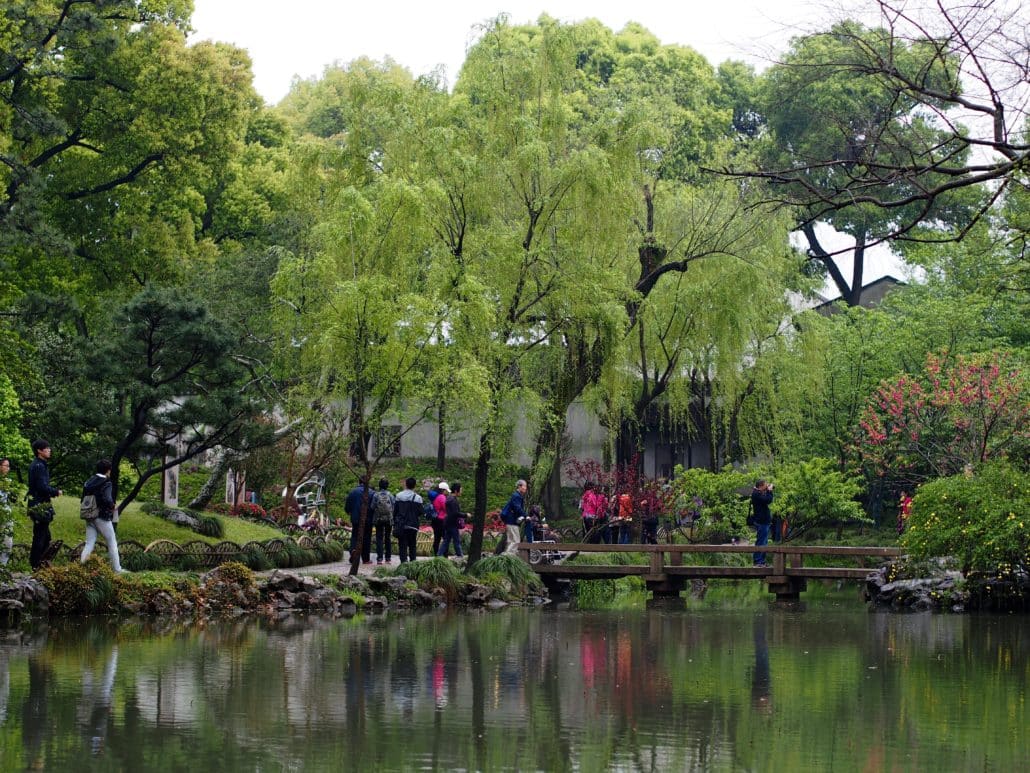
The gardens
Suzhou’s gardens are regarded as the mother gardens of China, a country in which man has been exploring the nature of life and his place in it through gardens for thousand of years. The city’s tradition of gardens, which originally served as displays of private wealth, dates back to the 6th century BC.
To that point: The Summer Palace, for instance, a jewel in any Beijing itinerary, draws heavily from the Suzhou school.
That’s a significant legacy, and UNESCO has noticed: The Classical Gardens of Suzhou UNESCO World Heritage Site includes nine gardens among the more than 60 preserved by the municipal government. They are:
- Humble Administrator’s Garden
- Lingering Garden
- Net Master’s Garden
- The Mountain Villa with Embracing Beauty
- The Canglang Pavilion
- The Lion Grove Garden
- The Garden of Cultivation
- The Couple’s Garden Retreat
- The Retreat & Reflection Garden
If you’re a first-timer, you may not be able to extract much from these names, and that’s okay. The feelings you feel in these gardens—provided you visit alongside a reasonable number of people—are stuffed, by intent, with the stuff of life. Four core elements bind all of the many iterations together—rocks, flowers, water, and pavilions—and, as I heard it, rocks represent the male essence and water stands as its female counterpart. Pavilions are staged with latticed windows for curated views, and stone bridges zigzag across water (traditionally, because spirits can’t navigate such patterns).
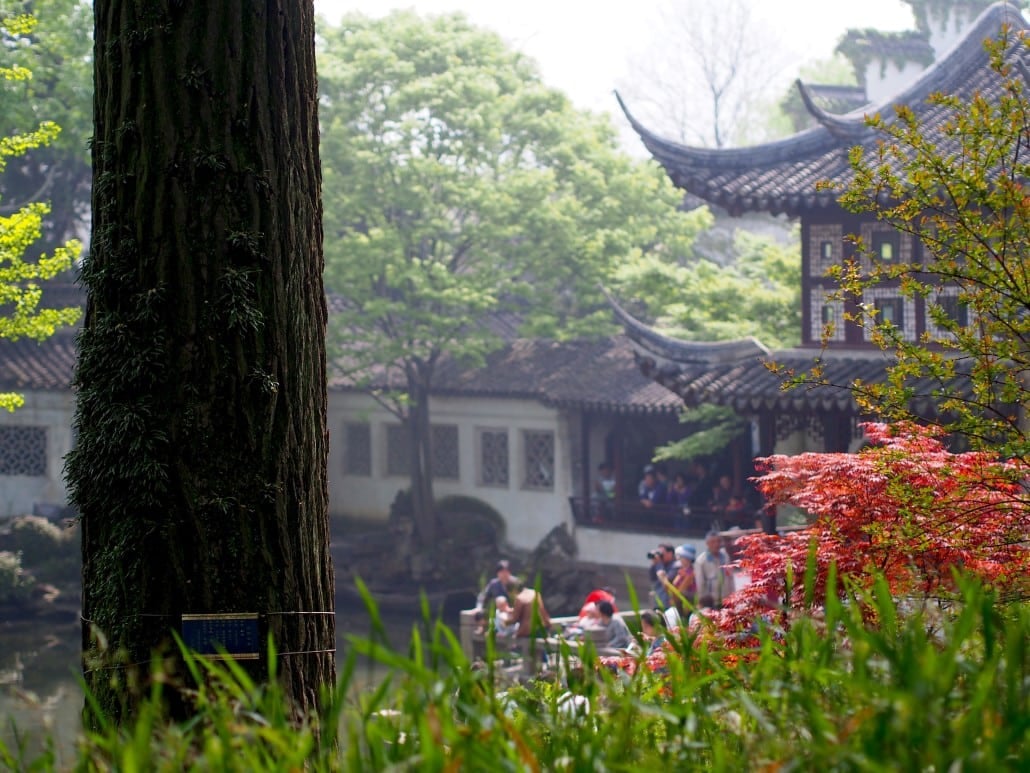
I also recall that Humble Administrator’s Garden (the most famous) dates back to 1509, that Lingering Garden contains more than 2,500 pieces of jade, and that’s about it. But again, on a 2016 visit, the takeaway is in the physical experience of wandering these beautiful spaces. The sophistication that defines the best of Suzhou’s gardens invokes an earthly precision that transcends cultural and historical context. It does not matter how far you are from understanding why it would be called Net Master’s Garden; in walking its zigzagged paths, you will feel, in some capacity, that you belong to the Earth, and that that is a nice thing. In its gardens most of all, Suzhou flaunts its most superlative achievement: a rare proficiency in massaging the world around us into balance, if just for a moment. Check them out.
More on Suzhou’s gardens from people who know better:
- Classical Gardens of Suzhou — UNESCO World Heritage Site inscription page
- Travel Suzhou’s guide to gardens in Suzhou
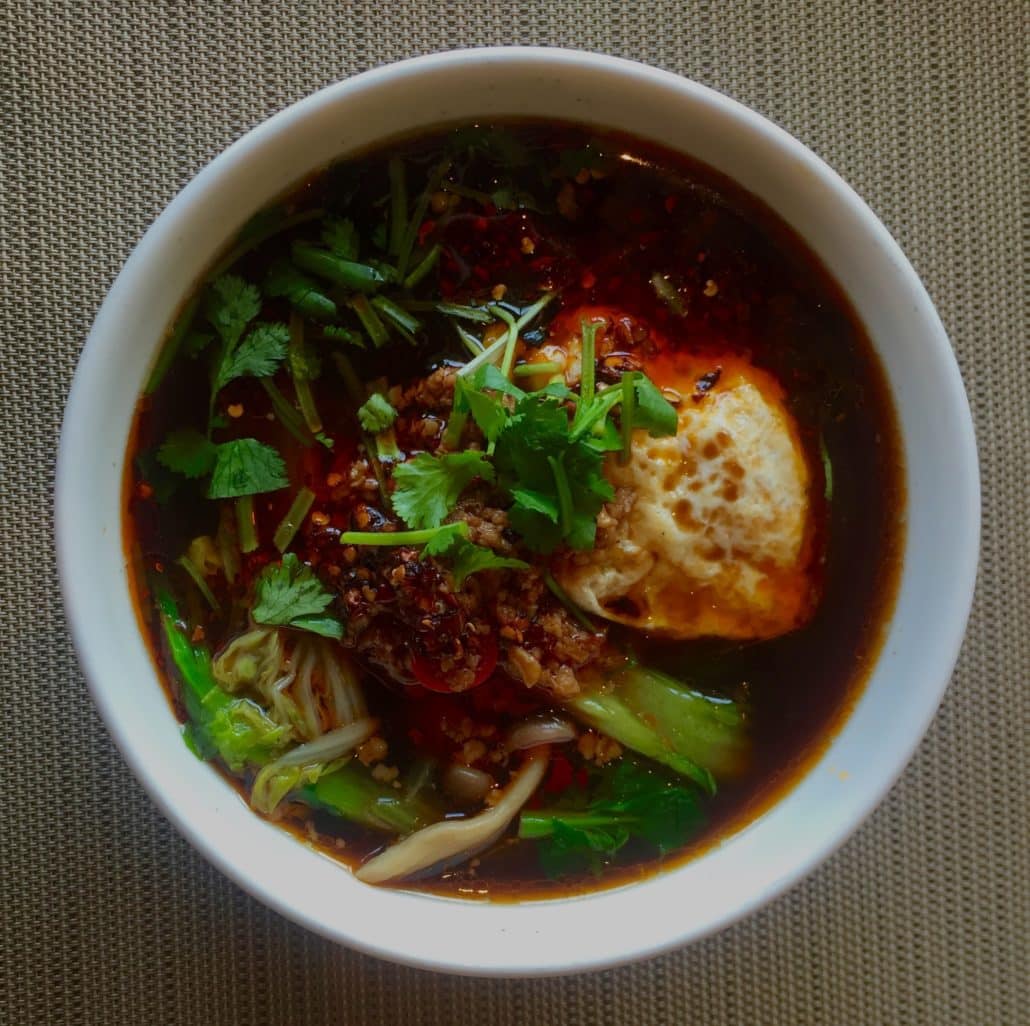
The food
You must know—or at least suspect—by this time in your life that dining in China is a far cry from the American takeout version. Anywhere in China, you’re likely to discover previously unknown noodle/poultry/fish dishes, and often, but not always, they hit your palate just right. Of course, there is regional variation in a country so large. Sauces and spiciness, most notably, are tweaked to meet the tastes of provinces, cities and even neighborhoods. In Suzhou, the taste is for sweeter flavors.

Eat always, but also, eat when you travel to Suzhou. Among the culinary highlights:
- Tong De Xing noodle restaurant (同德兴) — Looks small, and then you wander up the stairs and into Chinese-noodle Narnia. The noodle bowls, which come alongside small plates of items to dump in them (like bean curries), are fantastic. Go easy on the chile.
- Yaba Shengjian (哑巴生煎) — Popular for its amazing shengjian mantou, a local fried dumpling. Like many stops in Suzhou, the place does not receive English very well, but look, it won’t be so bad. This person went and took a photo.
- Song He Lou (山塘街松鹤楼) — One of the oldest restaurants in the city, right on Shantang Street. The Qing Emperor used to dine here according to one TripAdvisor reviewer, who you can choose to believe if you like.

- Mandarin fish (“flying squirrel fish”) — Perhaps the signature dish in the Suzhou diet. It’s a local fish, fried in a yolky baste until it resembles a flying squirrel and then slathered with a tangy-sweet sauce. Try Song He Lou (松鹤楼) for a good one.
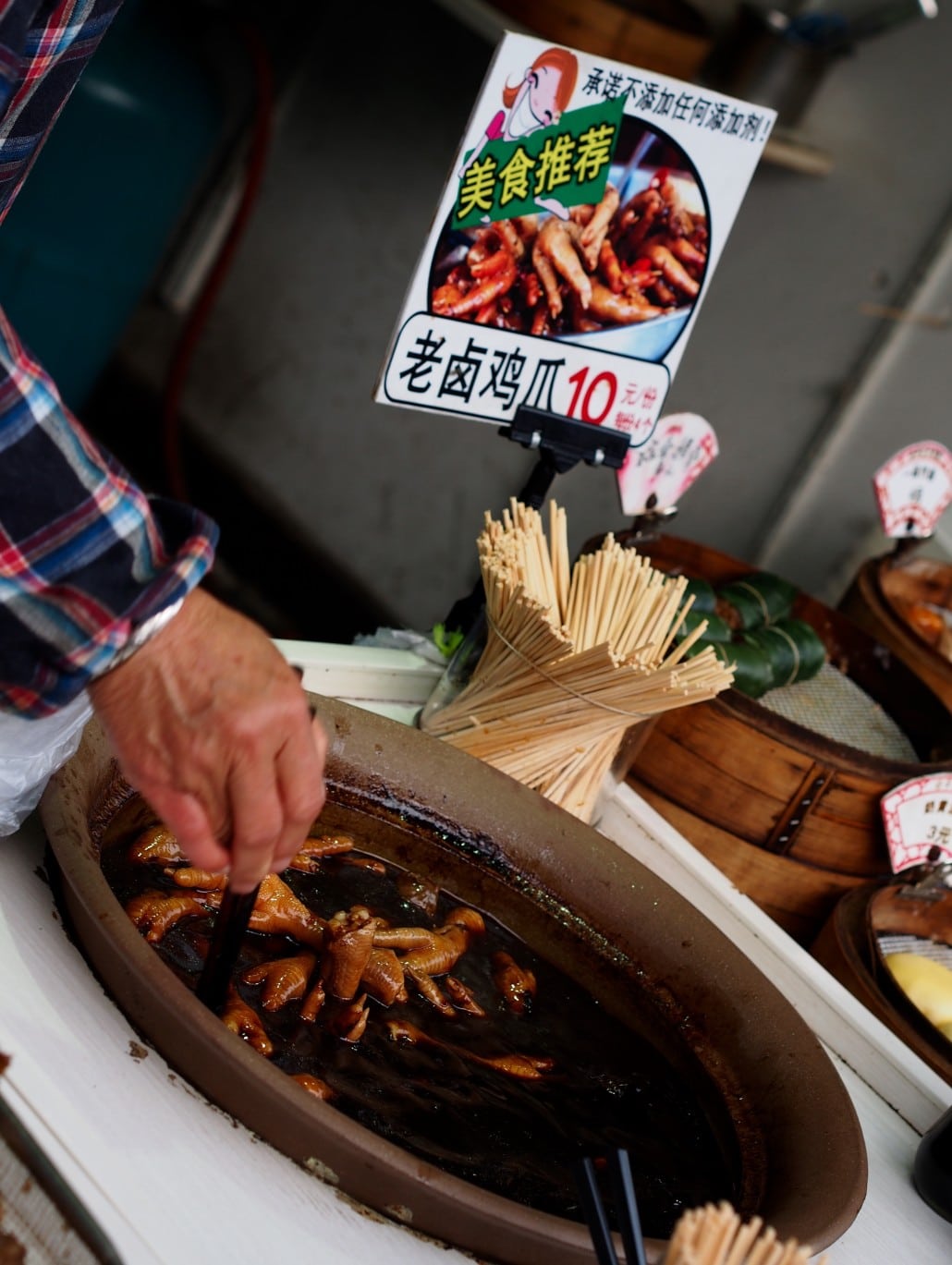
- The street food, especially on Pingjiang Road, Guanqian Street and Taijian Lane — As when you are venturing to understand any new place, in Suzhou you should stroll the liveliest, most tangled streets. You should also eat the food you stumble into, and in Suzhou, your options in that category know no boundaries. They may be sweet, doughy buns stuffed with red bean, unrecognizable as little ducks, pictured above. You’ll see chicken feet enough times to seriously weigh your aversion to them. And it just goes on and on.
- Breakfast noodle bowls at Jinji Lake Grand Hotel — My hunch is that delicious breakfast noodle bowls are easily found in Suzhou, but I ate mine each day (after skipping breakfast the first morning) at Jinji Lake Grand Hotel.
- Jia Jia Tang Bao (Shanghai) — While in Shanghai, as you will be at some point on any Suzhou trip, you must eat xiaolongbao, the city’s famous soup dumplings. I cannot in a post like this convey how strongly I recommend Jia Jia Tang Bao. English is straight-up absent, and so I had to travel engineer my way to the right food order (with the help of an English-speaking girl, the fourth person I asked for help; just look at this menu). Know what you’re getting into, don’t go during the lunch rush (I went at 11:30 am and waited 15 minutes, much shorter than is common), and just enjoy these things.
For more: Travel Suzhou’s guide to Suzhou cuisine.

Don’t miss
It’s a city of almost six million that hopes you’ll slow down. Meander slowly and float around by boat, and consider:
- Suzhou Museum — An I.M. Pei-conceived warchest of Suzhou treasures, which are admittedly a certain kind of treasure. I found the middle courtyard (referred to as a garden) and the serenity it achieved (in scenes such as the one above) to be the highlight. Note that: The line to get into to the museum was long on the occasion that I visited, and it’s closed on Mondays.
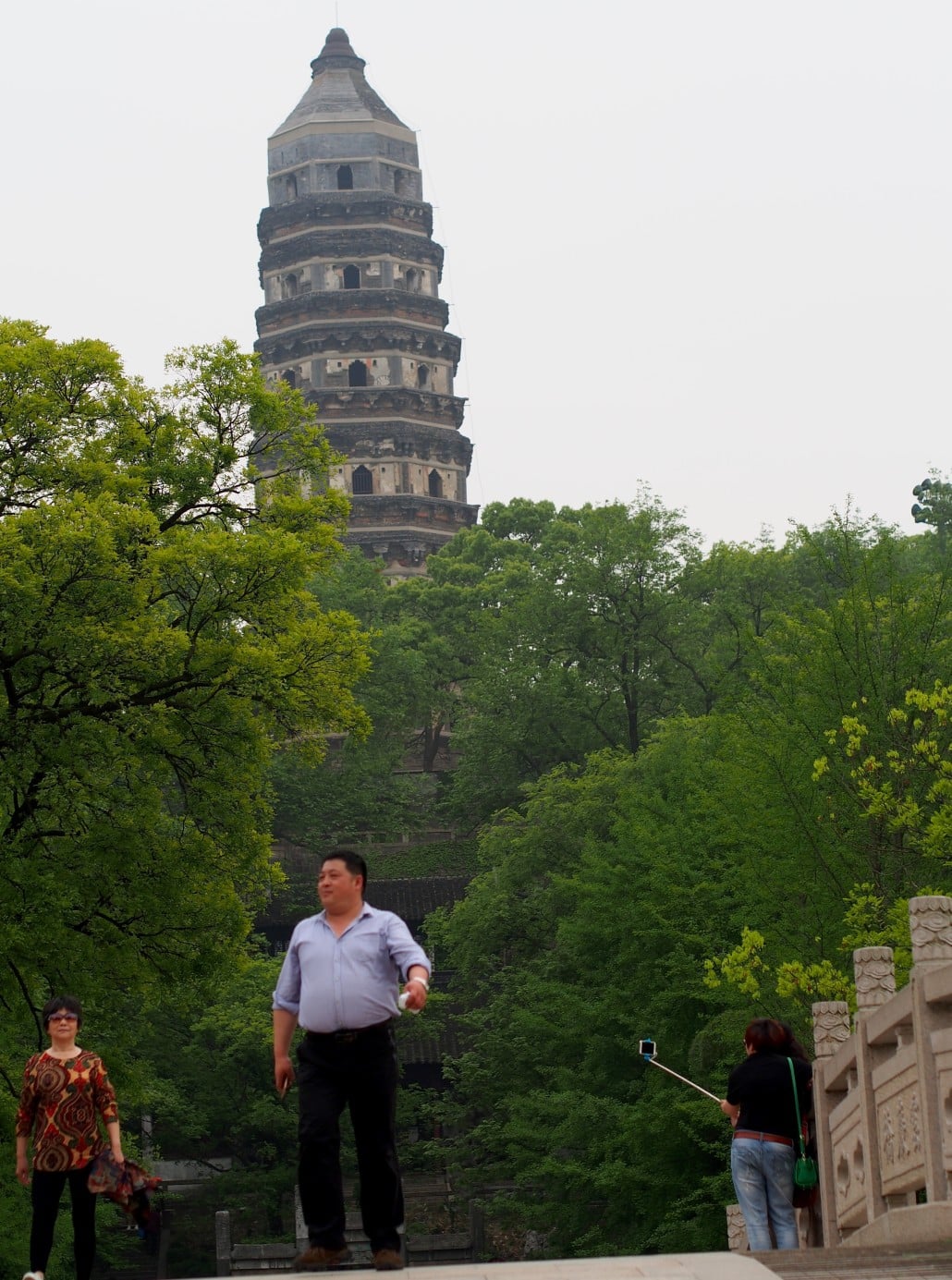
- Tiger Hill — Statistically the top spot for visitors to Suzhou, but to the poet Su Dongpo, it is much more serious than that. “To visit Suzhou and not see Tiger Hill would lead to a lifetime of regret,” he allegedly said, presumably before his friends told him to tone it down a little. More than 2,500 years of human history and the photogenic Yunyan Pagoda help make his case for Tiger Hill, however. So does a bonsai garden of some 500 plants, the “king” of which is 40-years-old and survived a lightning strike. You can also travel to and from Tiger Hill by boat, which is cool.
- Pingtan and kunqu opera on Pingjiang Road — Kunqu opera is one of the longest-running veins in Chinese culture. Suzhou happens to be one of the best places to see and appreciate it. Pingtan opera, meanwhile, sprang to life in Suzhou. Set to its city’s pace, Pingtan involves marathon solo performances that sometimes relay stories over a period of months. It’s a touchstone for the working classes of Suzhou, so grab some green tea in the clothes you’re in (it’s not the western opera) at a Pingjiang Road teahouse and see what it’s all about. It’s cheap (sometimes even free with your tea), and you can pretty much walk out when you’ve had enough.
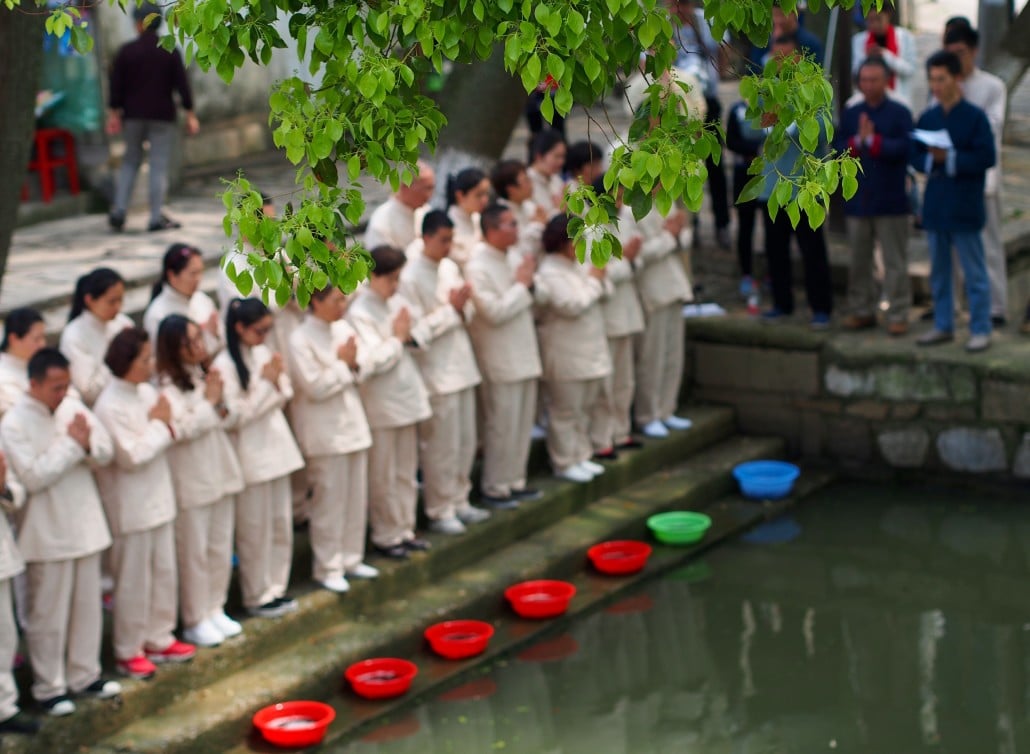
- Wormwood treatment — You can really, really slow things down with a massage channeling the area’s ancient reverence for wormwood. “Strengthening Yang Moxibustion Therapy,” as it’s taught at Fan Changwei’s Wormwood Institute, insists that a slow-burning piece of wood can be a conductor that pushes and pulls qi into balance through your meridian points. Maybe so; it feels amazing.
- Green tea — Drink it, because Suzhou’s green teas are famously some of the best in the world. For the curious, there is a green tea rabbit hole to fall into here; growing, picking, preparing, steeping, and tasting all draw expertise and innovation equatable to what’s seen in wine, coffee and beer, for example. You can dive into that rabbit hole through conversation at a teahouse, or right at the source (like Biluochun Tea Plantation).
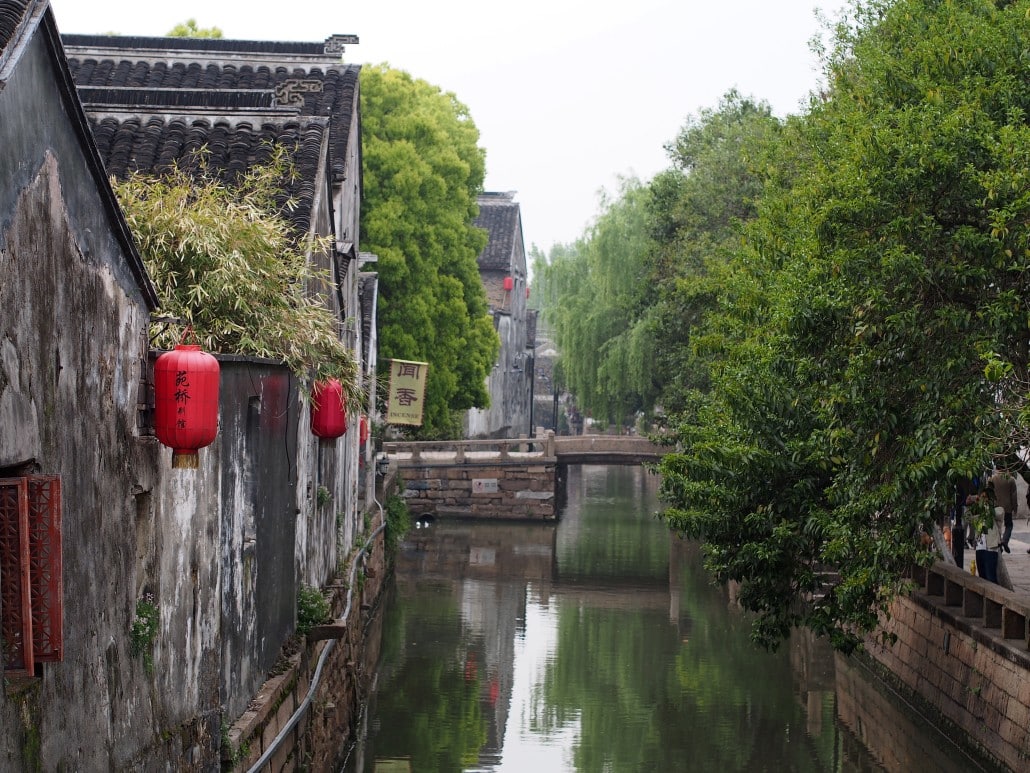
Maybe do miss
“Stinky tofu.” It is abundant in Suzhou, and its aroma—which plumes in the narrow Suzhou streets—is unpleasant to say the least.
It is a smell that I am happy to miss back home in New York. It is intoxicating in the way that “intoxicating” is used by pathologists, which is to mean “to poison.” And why wouldn’t it poison us? Stinky tofu is regular, soy-based tofu bathed in brine to fermentation (in mass-produced stinky tofu, the fermentation is sometimes imitated). Each brine is unique to its maker, but some of the finest batches of stinky tofu sit for months in fermenting milk twisted with notes of vegetables, meat, shellfish, and on. Legend holds that Chinese affinity for the snack dates back to the Qing Dynasty (1644-1912), but times do not always change: In 2016, the people of China, Taiwan and Hong Kong (at least) are still buying, selling and defending stinky tofu. Confronted with this reality in Suzhou, I did none of the three.
I’ve been told that the taste justifies the rest. I cannot say for sure, but I did leave Suzhou with a fondness for the city and its kooky cocktail of affronting experiences. Stinky tofu deserves some credit for that.
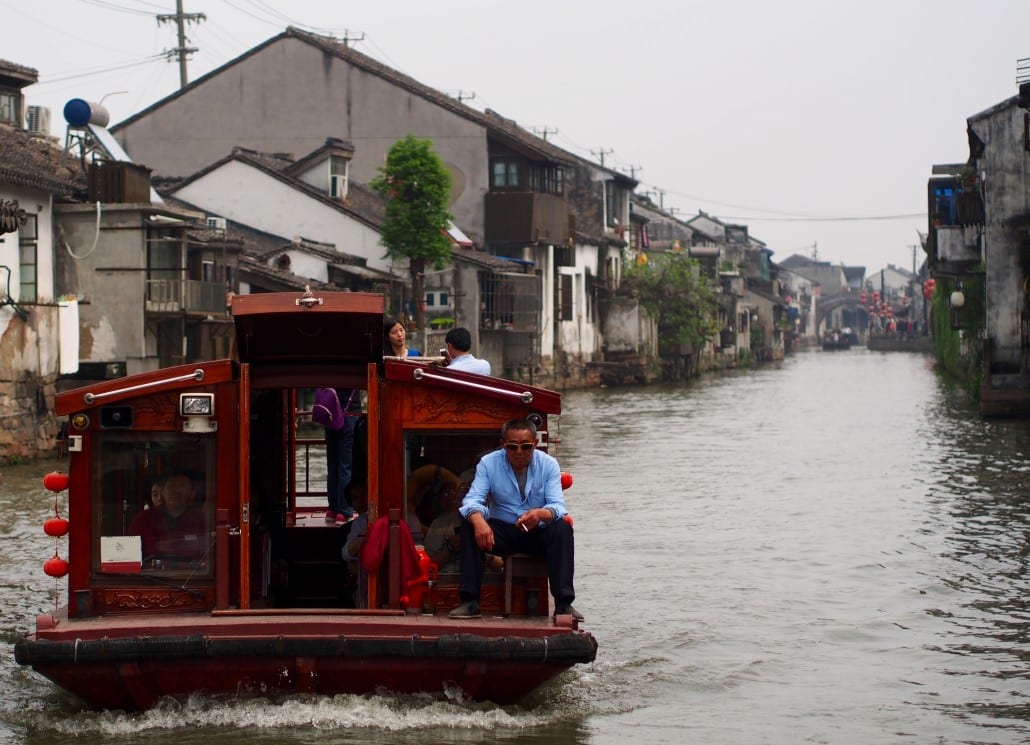
Getting around
The most wonderful, water-lined pockets of greater Suzhou (like Tongli) are best linked by wheels, as the city is simply too big to take by foot (though there are two metro lines). Fortunately, taxis in the city are remarkably cheap. One night, my guide Linda took a cab three miles for just seven RNB (around $1). Some destinations, like Tiger Hill, can also be reached by water. Uber is also available.
Note: Saturday traffic in particular can be “nightmarish,” per a resident.
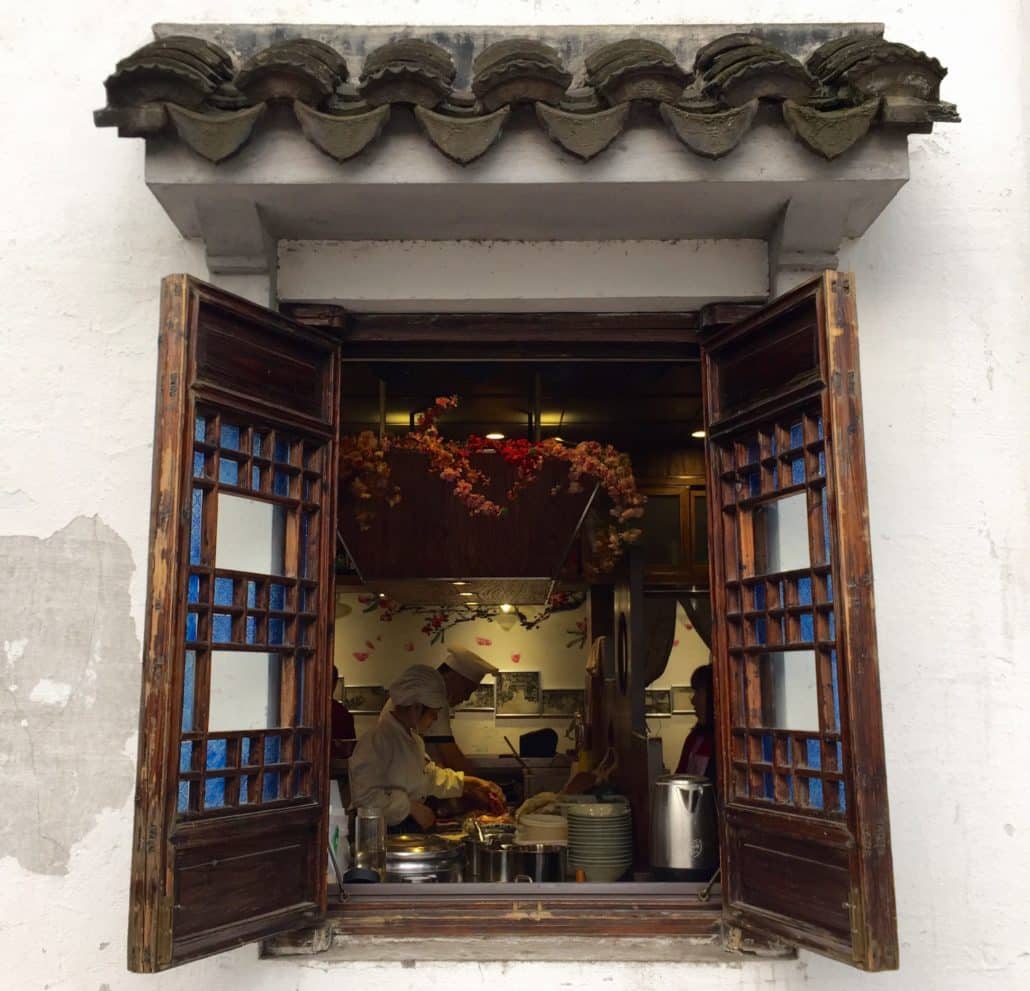
Where to stay
Suzhou is a huge city, full of hotels that want your RNB. Here are a few to start with:
- Jinji Lake Grand Hotel — A newly manicured luxury property of more than 125 acres. Set between two lakes, Jinji and Dushu, it offers guests tons of space both inside its 171 rooms (for work and sleep) and out (for ping-pong, swimming, drinking, etc., and for Suzhou-style restorative walks around its tremendous grounds). There’s a huge breakfast buffet with made-to-order noodle bowls, but for $363/night (rates seem to drop a lot), it was more than I needed. For a conference or business retreat, it (or the Kempinski nextdoor) might be a great fit.
- Blossom Hill Inn — Where Jinji Lake Grand Hotel is big, this restored mansion is intimate. Modern comforts have been delicately appointed alongside old treasures, and the value is there at $237/night (currently less on Booking.com). The pictures tell much of the story, so click the link. Also endorsed by Will.
- Scholars Hotel — Another five-star, this time set right off the canal-side bustle of Pingjiang Road. There’s less space than at Jinji Lake Grand Hotel (that’s fine), perhaps a little less history than at Blossom Hill Inn, but it’s in the best part of Suzhou and cheaper than both at $125/night (or less).
Tip: Wi-Fi is often free in Suzhou, but don’t forget to consider a VPN for full internet access in China. I used this one.
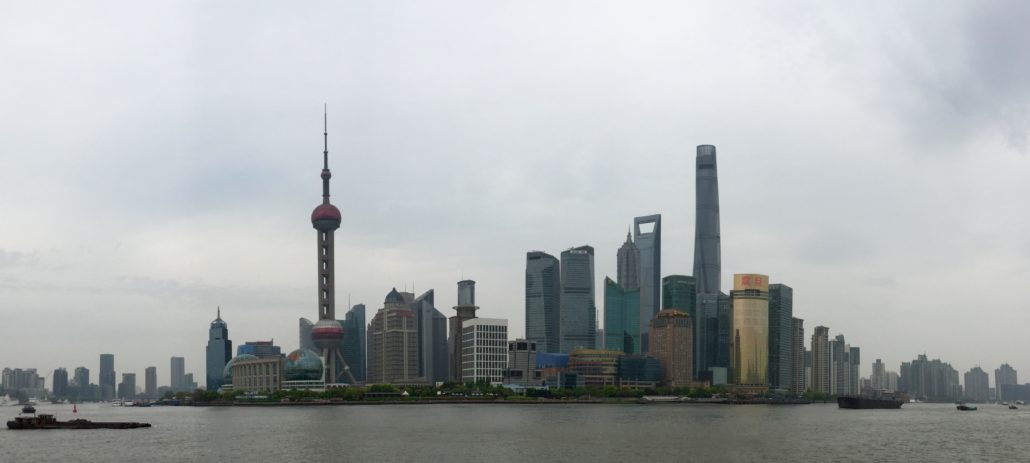
Getting there from Shanghai (25 minutes by train)
Though it employs a single time zone, China contains roughly the same landmass as is governed by the United States. It is of note, then, that Suzhou can be reached so quickly and affordably from Shanghai, whose airport gave passage to 60 million flyers last year. In just a day—if that’s all you have—you can flee Shanghai’s “Chinese New York” to unwind in a gondola on a canal lined with Buddhist temples and 1,000-year-old streets. Fully commit to the slowdown, and you might consider staying for more than a day—and maybe a Suzhou wormwood treatment to pull out any deeper-seeded stress.
Extra Shanghai fact: Shanghai’s iconic Bund—the promenade from which the photo above was taken—gets its name from the Persian word band, referring to its position by the water.
There are three main train stations in Shanghai that connect to Suzhou by maglev (magnetic levitation) train, which on paper peaks at 430 kph (267 mph). They are Shanghai Railway Station (on Metro lines 1, 3 & 4), Shangwai West Railway Station (on Metro line 11) and Shanghai Hongqiao Railway Station (on Metro lines 2 & 10). In Suzhou, there are four stations that receive and return trains back to Shanghai. They are Suzhou North Railway Station (on subway line 2), Suzhou Railway Station (on subway lines 2 & 4), China–Singapore Suzhou Industrial Park Railway Station, and Suzhou New District Railway Station (on subway line 3).
Shanghai tip: Consider asking your hotel concierge (in Shanghai or Suzhou), travel agent or tour operator to pick up your train ticket. That way, you bypass the considerable language barrier and ensure you get yourself to where you mean to go.
You can also take a bus (much slower than train), arrange transport via private shuttle/with a tour operator (slower, especially with traffic), etc. For a little more help, see:
- Official “Getting to Suzhou” guide from Travel Suzhou
- Guide to connecting Shanghai and Suzhou (with map) on ChinaTravelGuide.com
- Map of the Shanghai Metro
- Map of the Suzhou subway
- Shanghai-Suzhou with Rome2Rio.com
Final Shanghai tip: Absolutely eat xialongbao, Shanghai’s famous soup dumplings, at Jia Jia Tang Bao (see “The food” above).
For more information on travel to Suzhou, visit traveltosuzhou.com.





I am in the midst of planning my October trip to China and stumbled upon this article while searching your website for RFID blocking products.
An important tip is to be sure you choose the right Suzhou. While searching for train tickets online, I have seen in the city drop down menus “Suzhou (Jiangsu)” and “Suzhou (Annhui)”. And on one site, my options were “Suzhou (苏州)” and “Suzhou (宿州)”. So I plugged each of those city Chinese characters into the trabslator and the y both came back as “Suzhou”. Not helpful! Anyway, to readers who may not know, the Suzhou outside of Shanghai is the one in Jiangsu Province and is a ~$9 25-minute highspeed train ride away.
Thanks for the write up. I will be passing this post along to my dad too.
The maglev only goes from PVG to Longyang subway station. The rail that goes to Suzhou is high speed, but it only peaks out at 300 km/h.
Here is some very useful information that we found helpful when traveling in Suzhou!
https://www.traveltosuzhou.com/suzhou-at-a-glance/suzhou-china-transportation
Thanks, Alexis!
“One thing I notice on your video, which happened with my ASUS is the screen lag in your video capture. Not only in screen capture, but just the regular video preview screen lags even when your not recording. Is that something you have ever had to deal with? I also was pissed at RealTek sound ,which is the default sound program on my ASUS laptop. Extremely low quality! And extremely flawed. Every time the computer updates or restarts I get this high pitched feedback that I’m pretty sure has destroyed my speakers by now. It keeps squealing until you have to manually go in and turn down the microphone. Idk man, my ASUS was a piece of shit.
“